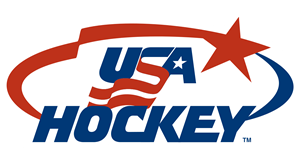Why Hockey is Loaded with Late Bloomers
By Michael Rand
The best young hockey players seldom grow up to be the best adult hockey players, nor were the vast majority of the world’s top NHL players at the very top of their youth age groups growing up.
Ken Martel, the Senior Director of Player and Coach Development for USA Hockey, could have told you that. And one supposes he could have saved the authors and researchers of a recently published study a lot of time and effort after they reached the same conclusion that he intuitively knew.
“Successful junior athletes and successful senior athletes are largely two disparate populations,” was one of the study’s key findings.
But Martel was still grateful to have the facts laid out so plainly and painstakingly, particularly as they pertain to hockey.
“Hockey is an early participation sport but a late specialization sport. It’s what we’ve known and watched and seen across all sports for a long time. Someone just went out and bothered to collect the data,” Martel says. “But sometimes you have to prove that water is wet.”
EVENING OUT
The reasons for the disparity between junior and senior success are myriad, but some of it boils down to physical development.
Players who might have a size advantage at 10U or 12U because of early growth – leading to faster skating, harder shots and other edges – will often see those benefits smooth out as physical late bloomers catch up during their teen years.
“We’re like a lot of other things. Things don’t shake out until everyone has gone through puberty and then it takes time,” Martel says. “Like most sports, early success is not a predictor of long-term real success in our sport.”
Those human growth lessons make talent evaluation a messy, complex process – something the study shows, Martel says.
“Someone is 5-foot-11 at age 12, then all the sudden everyone is that size or bigger,” he says. “What are the skills that translate? We get fooled.”
SPECIAL TREATMENT
Talent evaluators get fooled because, as Martel notes, it’s hard to look away from the most talented players in an age group.
But sometimes the evaluation becomes flawed because those players start to get treated differently. Early success can be a paradox.
“We change how we work with players. It’s not that they might have the potential to be good, but we all of the sudden change what we do. We treat them like they’re special and don’t have to earn things all the time,” Martel says. “At the highest level of performance, you’re only as good as your last performance or two and you have to keep working to get better.”
TOO MUCH INTERVENTION
Players who have early success might keep rising through the ranks and making elite teams even as they start to come back to the pack. Or parents might ensure that they do. This does them no favors.
“I was having a conversation with college coaches not long ago and talking about how in our system right now, very few kids have to try out anymore. They are promised spots on teams,” Martel says. “The ability to earn something is lost, or the parent jumps in and a kid doesn’t have to overcome adversity.”
Martel says learning to handle the disappointment of not making a select team is valuable and that players who have parents that encourage them to use it as motivation to make it next time are lucky.
By contrast, “bulldozer parents,” as Martel calls them, don’t let players who tasted success early learn how to fail.
“It’s not their fault they want best for kids, but in their rush to help we lose valuable lessons,” he says.
A MESSAGE OF HOPE
But underlying all the research should be a message of hope. Some of the most gifted players at young ages do become the best as they mature. And those who start off slower still have more than enough time to catch up.
“Look at the NHL Draft. Even there, quite a few players who were taken in the first round who don’t really make it with a viable career,” Martel says. “If you look at statistically, 16 or 17 percent of the league is undrafted. Even at those ages, there is a significant portion developing after prime selection years. … Our families think that at 15, 16 years old if you haven’t made it, you aren’t that player and you don’t have a chance. It’s exactly the opposite.”
And it’s nice for Martel to know he’s not the only one who knows it.
“When the research came out, it was sent out in the Olympic sports community, and most people who sit in positions like mine would say ‘tell us something we don’t know,’” Martel says. “But it’s really good that someone went out and said these things. We want to deal in facts, not opinions, so that’s important.”




